|
New from SETA Foundation for Political, Economic and Social Research:
by Nuh YILMAZ,
|
|
|
Joe Biden was selected as Barack Obama’s vice presidential candidate largely because of his expertise in foreign policy. Traditionally, in U.S. politics, Dick Cheney-like strong vice presidents are exception, not the rule. It is wiser to focus on Obama’s foreign policy outlook rather than Biden’s, which would benefit Turkey in the long run with its realistic tendencies. Biden’s voting pattern, as it is displayed in three different issues (Cyprus-Armenian Issue-Iraq) does not seem friendly to the Turkish position. However, Biden as a statesman would not create extra problems for Turkey at the expense of U.S national interests. In all of these issues, the person that should be watched carefully is Obama, not Biden. Spending more energy to analyze Obama’s geopolitical priorities can benefit Turkey in the long run. Please find attached a copy of SETA Policy Brief No. 21, “Joe Biden: A Realist Cold War Liberal” Please click on the following link to download the document:
|
|
Tag: Barack Obama
-
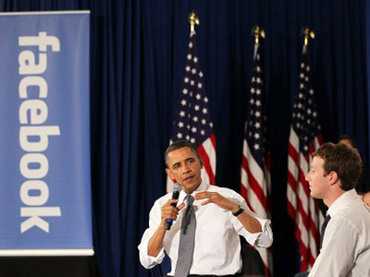
“Joe Biden: A Realist Cold War Liberal”
-
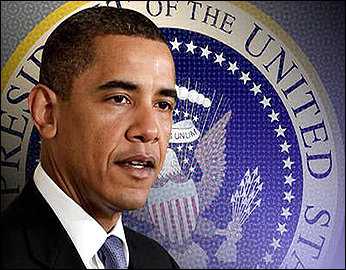
Obama Wins Nomination; Biden and Bill Clinton Rally Party
Brendan Smialowski for The New York Times
Senator Barack Obama joined Senator Joseph R. Biden Jr. on stage on Wednesday. More Photos >
DENVER — Barack Hussein Obama, a freshman senator who defeated the first family of Democratic Party politics with a call for a fundamentally new course in politics, was nominated by his party today to be the 44th president of the United States.
Skip to next paragraph
Multimedia
Slide ShowWorking the Convention Crowds
Related
Man in the News: A Consistent Yet Elusive Nominee (August 28, 2008)
News Analysis: For Obama, a Challenge to Clarify His Message (August 27, 2008)
Clinton Rallies Her Troops to Fight for Obama (August 27, 2008)
The unanimous vote made Mr. Obama the first African-American to become a major party nominee for president. It brought to an end an often-bitter, two-year political struggle for the nomination with Senator Hillary Rodham Clinton, who, standing on a packed convention floor electric with anticipation, moved to halt the roll call in progress so that the convention could nominate Mr. Obama by acclamation. That it did with a succession of loud roars, followed by a swirl of dancing, embracing, high-fiving and chants of “Yes, we can.”
In an effort to fully close out the lingering animosity from the primary season, former President Bill Clinton, in a speech that had been anxiously awaited by Mr. Obama’s aides given the prickly relations between the two men, offered an enthusiastic and unstinting endorsement of Mr. Obama’s credentials to be president. His message, like the messenger, was greeted rapturously in the hall.
Mr. Clinton asserted, as Mrs. Clinton had when she spoke to the convention on Tuesday night, that the nation needed to elect a Democrat to restore the damage he said President Bush had done to the country, at home and around the world.
“Barack Obama is ready to lead America and restore American leadership in the world.” Mr. Clinton said. “Ready to preserve, protect, and defend the Constitution of the United States. Barack Obama is ready to be president of the United States.”
Mr. Clinton was followed by Senator Joseph R. Biden Jr. of Delaware, Mr. Obama’s choice for vice president, who used his speech to set out the Democratic case against the Republican opponent, Senator John McCain.
“Our country is less secure and more isolated than in any time in recent history,” Mr. Biden said. “The Bush-McCain foreign policy has dug us into a few deep holes with very few friends to help us climb out.”
“These times require more than a good soldier,” Mr. Biden said. They require a wise leader.”
In an address that was at turns personal, emotional and barbed, he said, “Today the American dream is slipping away.”
“John McCain doesn’t seem to get it,” Mr. Biden said. Barack Obama gets it.
To the delight of the crowd, at the conclusion of his address Mr. Biden was joined on stage by Mr. Obama, who made a point to thank Mr. Clinton — with whom he has had a prickly relationship — for his leadership as president. The historic nature of the moment quickly gave way to the political imperatives confronting Mr. Obama, who arrived here in the afternoon and is to accept the nomination Thursday night before a crowd of 75,000 people in a football stadium. After days in which the convention often seemed less about Mr. Obama than about the two families that have dominated Democratic politics for nearly a half-century, the Kennedys and the Clintons, he still faced a need to convince voters that he has concrete solutions to their economic anxieties and to rally his party against the reinvigorated candidacy of Mr. McCain.
The roll-call vote took place in the late afternoon — the first time in at least 50 years that Democrats have not scheduled their roll call on prime-time television — as Democrats sought to avoid drawing attention to the lingering resentments between Clinton and Obama delegates. Yet the historic nature of the vote escaped no one, and sent a charge through the Pepsi Center as a procession of state delegations cast their votes and the hall, slightly empty at the beginning of the vote, became shoulder-to-shoulder with Democrats eager to witness this moment.
As planned, it fell to Mrs. Clinton to put Mr. Obama over the top. He was declared the party’s nominee at 4:47 p.m. Mountain Time after Mrs. Clinton, in a light blue suit standing out in a crowd that included almost every elected New York official, moved that the roll call be suspended and that Mr. Obama by declared the party’s nominee by acclamation. The vote was timed to conclude during the network evening news broadcasts.
“With eyes firmly fixed on the future in the spirit of unity, with the goal of victory, with faith in our party and country, let’s declare together in one voice, right here and right now, that Barack Obama is our candidate and he will be our president,” Mrs. Clinton said.
“I move that Senator Barack Obama of Illinois be selected by this convention by acclamation as the nominee of the Democratic Party for president of the United States,” she said.
Speaker Nancy Pelosi, standing at the lectern, asked for a second and was greeted by a roar of voices. A louder roar came from the crowd when she asked for support of the motion.
When the voting was cut off, Mr. Obama had received 1,549 votes, compared with 231 for Mrs. Clinton.
The hall pulsed when Mr. Clinton strode onto the stage for a performance that became a reminder of why Democrats had considered him a politician with once in a generation skills. There were no signs that screamed “Clinton,” but Democrats waved American flags in quick tempo to welcome him to the stage. Again and again, Mr. Clinton tried to quiet the crowd; they ignored him.
Skip to next paragraph
“You all sit down: We’ve got to get on with the show!” he said as the applause lingered on for more than three minutes and his wife watched from the floor.
Without mentioning Mr. McCain by name, he offered a sharp denunciation of him and Republicans as he made the case for Mr. Obama.
“The Republicans will nominate a good man who served our country heroically and suffered terribly in Vietnam,” he said, “He loves our country every bit as much as we all do. As a senator, he has shown his independence on several issues. But on the two great questions of this election, how to rebuild the American Dream and how to restore America’s leadership in the world, he still embraces the extreme philosophy which has defined his party for more than 25 years.”
“They actually want us to reward them for the last eight years by giving them four more,” he said. “Let’s send them a message that will echo from the Rockies all across America: Thanks, but no thanks.”
For Mr. Obama, the nomination — seized from Mrs. Clinton, who just one year ago was viewed as the obvious favorite to win the nomination especially against an opponent with a scant political resume — was a remarkable achievement in what has been a remarkable ascendance. It was less than four years ago that Mr. Obama, coming off of serving seven years as an Illinois state senator, became a member of the United States Senate. He is 47 years old, the son of a white mother from Kansas and a black father from Kenya.
Mr. Obama’s nomination came 120 years after Frederick Douglass became the first African-American to have his name entered in nomination at a major party convention. Douglass received one vote at the Republican convention in Chicago in 1888; Senator Benjamin Harrison of Indiana went on to win the White House that year.
Making the moment even more striking was the historical nature of Mrs. Clinton’s candidacy. She was the third woman whose name has been entered as a candidate for president at a major party convention. As she moved to end the roll-call vote, some women in the hall could be seen wiping tears from their eyes.
The presidential candidate is typically an absent figure during the first few days of a convention. In this case, Mr. Obama’s vacuum was filled by the Clintons and the tribute paid to the party to Mr. Kennedy on Monday night. What has taken place over the past two days might have politically necessary and even helpful, but it did not go far in helping Mr. Obama achieve some of the critical goals of this convention.
As a result, he is under considerable pressure Thursday night to use this speech in an ambitious setting, a football stadium, to present a fuller picture of himself, Americans who might have doubts about whether he is ready to be president, and begin presenting a picture of what he would do in the White House. For Mr. Obama, the final appearance is not the coda to a convention; in many ways, it may prove to be his entire convention.
Mr. Obama, who arrived in Denver just after 3 p.m., was at his hotel in downtown Denver with his wife and daughters when he learned that he had been nominated by acclamation.
Kitty Bennett, John Broder and Janet Elder contributed reporting.
-
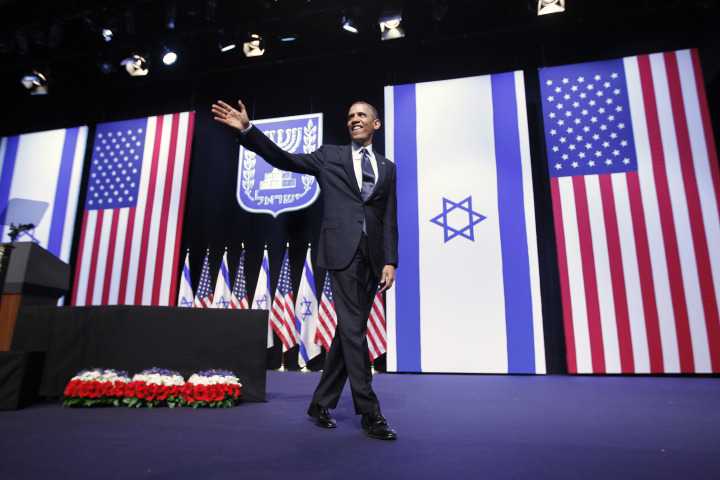
Obama-Biden Democratic Presidential Ticket Strong on Genocide Recognition, US-Armenia Relations
WASHINGTON-–The Armenian National Committee of America (ANCA) welcomed Democratic Presidential hopeful Barack Obama’s announcement of longtime Armenian American issues supporter, Sen. Joe Biden as his choice for Vice-President. Sen. Biden, who chairs the Senate Foreign Relations Committee, has been an outspoken advocate of U.S. reaffirmation of the Armenian Genocide and brings the principled international leadership needed to meet the challenges of the 21st Century.
“As we stated back in January, Armenian Americans, a community that is deeply committed to a moral U.S. foreign policy and constructive American engagement abroad, respect Senator Biden’s leadership and, today, we welcome his addition to the Democratic ticket,” said ANCA Executive Director Aram Hamparian.
Elected to office in 1972, Senator Biden has been a voice of moral clarity on issues of concern to the Armenian American community.
He has been a support for U.S. recognition of the Armenian Genocide, dating back to his work with Senator Bob Dole to pass the Armenian Genocide Resolution (S.J.Res.212) in 1990, and stronger U.S.-Armenia relations.
Sen. Biden was also a perennial supporter of Section 907 of the Freedom Support Act, adopted in 1992, which restricted U.S. assistance to Azerbaijan due to its ongoing blockades of Armenia and Nagorno Karabagh.
In May, 2007, Sen. Biden, in response to a question from the Los Angeles Times editorial board about the Armenian Genocide Resolution (S.Res.106), said: “I support it, and the reason is simple: I have found in my experience that you cannot have a solid relationship with a country based on fiction. It occurred. It occurred.” Senator Biden has been cosponsor of every resolution reaffirming the Armenian Genocide introduced in the Senate over the past 20 years.
In connection with his leadership in pressing the Administration to explain its firing of U.S. Ambassador to Armenia, John Evans, and the controversy over the subsequent nomination of Dick Hoagland in 2007, Senator Biden secured from the Administration a number of commitments, among them that:- The next U.S. Ambassador to Armenia will meet extensively with representatives of the Armenian American community before and during their tenure in Yerevan.
- The State Department will brief Members of Congress on its efforts to promote Turkish recognition of the real history of the Armenian Genocide.
- U.S. ambassadors to Yerevan and Ankara would exchange visits for the purpose of ending Turkey’s economic blockade of Armenia.
Sen. Biden also authored a resolution (S.Res.65), which was adopted in the Senate Foreign Relations Committee by unanimous consent, to honor journalist Hrant Dink, who was assassinated in Turkey last year for writing about the Armenian Genocide.In July, 2008, Sen. Biden reiterated his commitment to securing U.S. and Turkish recognition of the Armenian Genocide in connection with the nomination of U.S. Ambassador to Armenian Marie Yovanovitch. “Recognition by the United States of the Armenian Genocide is not the final goal. The real goal is the recognition of Turkey – of the Turkish Government – of the Armenian Genocide and the establishment of a common Turkish-Armenian understanding of the events and tragedy that took place,” stated Sen. Biden.
The ANCA endorsed Senator Obama in the Democratic primaries and will announce its general election endorsement decision following the Democratic and Republican primaries. The ANC of Iowa had endorsed Sen. Joe Biden in his presidential election bid prior to the Iowa primary earlier this year.
Friday, August 22, 2008
-
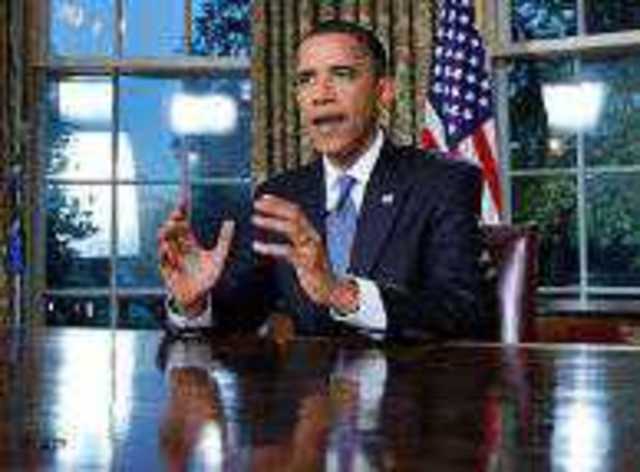
Obama-Biden Democratic Presidential Ticket Strong on Genocide Recognition, US-Armenia Relations
Obama-Biden CIFTINE PELOSI’YIDE ILAVE EDINCE UCGENIN AYAKLARI TAMAMLANMAKDA.. OBAMANIN BASKANLIGI SAYET GERCEKLESIRSE .. HEPIMIZ ACI BIR SURPRIZE SIMDIDEN HAZIRLANALIM … tf
WASHINGTON-–The Armenian National Committee of America (ANCA) welcomed Democratic Presidential hopeful Barack Obama’s announcement of longtime Armenian American issues supporter, Sen. Joe Biden as his choice for Vice-President. Sen. Biden, who chairs the Senate Foreign Relations Committee, has been an outspoken advocate of U.S. reaffirmation of the Armenian Genocide and brings the principled international leadership needed to meet the challenges of the 21st Century.“As we stated back in January, Armenian Americans, a community that is deeply committed to a moral U.S. foreign policy and constructive American engagement abroad, respect Senator Biden’s leadership and, today, we welcome his addition to the Democratic ticket,” said ANCA Executive Director Aram Hamparian.Elected to office in 1972, Senator Biden has been a voice of moral clarity on issues of concern to the Armenian American community.
He has been a support for U.S. recognition of the Armenian Genocide, dating back to his work with Senator Bob Dole to pass the Armenian Genocide Resolution (S.J.Res.212) in 1990, and stronger U.S.-Armenia relations.
Sen. Biden was also a perennial supporter of Section 907 of the Freedom Support Act, adopted in 1992, which restricted U.S. assistance to Azerbaijan due to its ongoing blockades of Armenia and Nagorno Karabagh.
In May, 2007, Sen. Biden, in response to a question from the Los Angeles Times editorial board about the Armenian Genocide Resolution (S.Res.106), said: “I support it, and the reason is simple: I have found in my experience that you cannot have a solid relationship with a country based on fiction. It occurred. It occurred.” Senator Biden has been cosponsor of every resolution reaffirming the Armenian Genocide introduced in the Senate over the past 20 years.
In connection with his leadership in pressing the Administration to explain its firing of U.S. Ambassador to Armenia, John Evans, and the controversy over the subsequent nomination of Dick Hoagland in 2007, Senator Biden secured from the Administration a number of commitments, among them that:- The next U.S. Ambassador to Armenia will meet extensively with representatives of the Armenian American community before and during their tenure in Yerevan.
- The State Department will brief Members of Congress on its efforts to promote Turkish recognition of the real history of the Armenian Genocide.
- U.S. ambassadors to Yerevan and Ankara would exchange visits for the purpose of ending Turkey’s economic blockade of Armenia.
Sen. Biden also authored a resolution (S.Res.65), which was adopted in the Senate Foreign Relations Committee by unanimous consent, to honor journalist Hrant Dink, who was assassinated in Turkey last year for writing about the Armenian Genocide.In July, 2008, Sen. Biden reiterated his commitment to securing U.S. and Turkish recognition of the Armenian Genocide in connection with the nomination of U.S. Ambassador to Armenian Marie Yovanovitch. “Recognition by the United States of the Armenian Genocide is not the final goal. The real goal is the recognition of Turkey – of the Turkish Government – of the Armenian Genocide and the establishment of a common Turkish-Armenian understanding of the events and tragedy that took place,” stated Sen. Biden.
The ANCA endorsed Senator Obama in the Democratic primaries and will announce its general election endorsement decision following the Democratic and Republican primaries. The ANC of Iowa had endorsed Sen. Joe Biden in his presidential election bid prior to the Iowa primary earlier this year.
Friday, August 22, 2008
-
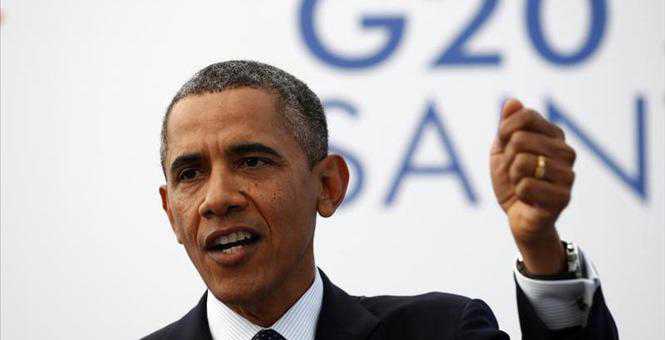
Open Letter to Senator Barack Obama
-

Letter to Obama
June 23, 2008
Senator Barak Obama
713 Hart Senate Office Building
Washington, DC 20510Improving our relations with our allies and trying to engage in talks with our enemies is good but endorsing the so called Armenian Genocide has already created an enemy of the entire population of a strategic ally in that of Turkey, Azerbaijan and other allied Nations.
The genocide claim is biased and inaccurate. A diligent and impartial person would look at the correct evidence and find that the events do not describe genocide. We need to have the truth be told. The following would show only some of the reasons for the claim to be false.
1. Ruling on Serbia is one indication what genocide means.
On February 26, 2007 the International Court of Justice determined that Serbia is NOT guilty of genocide in Bosnia in spite of the trials and conviction for war crimes of a number of Bosnians and Serbs who were financed and equipped by Serbia and findings of clear links between Serbia and the Bosnian Serb military who committed the genocide in Srebrenica. The Court ruled that the crime of genocide required showing convincingly there was a specific plan or the specific intention to destroy the group or part of it.
2. Trials conducted by Allies after the War acquitted the Turks.
At the end of WWI the allies occupied the Ottoman Empire. At the insistence of the occupying Allies a number of the ruling Party members were tried between 1919 and 1920 by the Ottomans and convicted of crimes. Please read Not finding these trials legitimate or satisfactory the Allies imprisoned more than 100 Ottoman officials and sent them to Malta for trial. The Allied High Court then convened, similar to the Nuremberg tribunal, and had all the archives and government documents searched by experts for evidence that showed crimes proving genocide. After 2 years and 4 months they were unable to find any evidence even after requesting evidence from the United States and others who could also not find any. All the Turkish officials in Malta prisons were released. There was and is NOT any evidence that will hold up in a court of law that will point to an Armenian genocide. If truly interested anyone could read the documents in the British archives. These documents are listed in:
3. No new trials have ever been set by the UN Criminal court.
Consider these two facts stated above and consider the standing of the persons proposing this legislation as presuming guilt before trial or without trial. If there would have been any serious evidence of genocide the Armenians would have long ago gone to the Criminal Courts.
4. Seven US Secretaries of State announced their views.
Seven US Secretaries of State signed a declaration that passing a resolution in the House regarding the alleged Armenian Genocide would be a mistake and counter productive. These are highly regarded experienced statesmen and diplomats. Foreign policy cannot be conducted by antagonizing our allies. Respected historians will agree that genocide does not describe the events. William Langer, Guenter Lewy, Heath Lowry, Justin McCarthy, Edward Erickson, Andrew Mango et al have written extensively on this subject. Another source would be the report of the first Armenian Prime Minister Hovannes Katchaznouni to the Dashnak Party in 1923. This Armenian Prime Minister writes that Turkey acted in defense of its existence in ordering the relocation.
5. Falsification of genocide numbers shows dishonesty.
Another fallacy is the number of Armenians killed in that period. A dozen or more sources put the population of the Armenians in Anatolia at around 1,100,000 of which 300,000 fled with the Russians after the War, 150,000 joined the French Army and attacked Turkish cities in the south and then with many others migrated to other Countries. The falsifiers have 1,500,000 killed out of less than half a million Armenians accounted for. The Armenian population never exceeded about 15% of the population in the eastern provinces.
6. The order to relocate the Armenians in 1915 had the same purpose as the relocation of the Japanese in the US during WWII.
The forced relocation of the 120,000 Japanese-Americans in WWII to barbed wire camps was found to be legal by the U.S. Appeals Court on 18 April 1942 in the case of Korematsu vs US citing a lengthy reasoning. This in effect closed all matters relating to compensation, return of property and claims of hardship. Yet Reagan signed a presidential apology in 1988. What he saw was that the relocation started four months after Pearl Harbor at which time there was no eminent danger that the Japanese were going to invade mainland US, the Japanese-Americans were not arming themselves and ready to fight with the Japanese and they were not starting a round of sabotage and terror. They were innocent citizens of the US.
Let us compare this with the Armenians in Turkey. The year is 1915. Russians have entered Turkish territory from the East. English, French and Anzac’s landed in Galipoli aiming to advance to Istanbul. Allenby crossed the Suez and was advancing to the North with the assistance of the Arabs. Since 1890 the Armenian Hinchak and Dashnak organizations were actively engaged in armed revolt. Three prominent Armenians who were members of parliament defected and founded guerilla groups inside Turkey and started the ethnic cleansing of Turks with the help of Hinchak and Dashnak in regions where Turkish Army presence was minimal. The resulting destruction by the Armenians from 1890 to 1920 was the burning down of 22 villages, the killing of more than 400,000 Turkish civilians and the sabotaging of the Ottoman Armies where in one instant in Sarikamis resulted in the freezing to death of 80,000 troops while fighting the Russians.
On 11 April 1915 the minority Armenians of Van revolted and killed almost all of the Turkish population. A few weeks later they handed the city over to the Russians. In spite of a previous agreement between Armenians in Turkey and the Ottoman government that guaranteed that the Armenians would not fight against the Ottomans. As soon as the Russians further advanced into Turkey the Armenian guerillas revolted in Bitlis and Mus. At this time Enver Pasha decided to relocate the Armenians only in the war zones to the southern parts of the Empire. When finally the legislation was approved on 30 May 1915 it required protection of lives and property, resting during journey, distribution of food, designation of land for resettlement, the building of housing for those in need, the payment of assessed value of the property they vacated and for other items with a budget assigned for this purpose. Documents to this effect are available. They prove that the Armenian Genocide claim is false and a lie,
In his book “The Armenians”, Published by G. Toulmin, UK 1916, C.F. Dixon-Johnson wrote:
“Give a lie twenty-four hours’ start and it will take a hundred years to overtake it.”
7. We are hoping that you will be impartial and read the documentation before you start making enemies around the world..
We are praying for a peaceful world that is not filled with hatred and revenge.
Sincerely,
Demirtas Bayar
44 Alex Drive
White Plains, NY 10605
